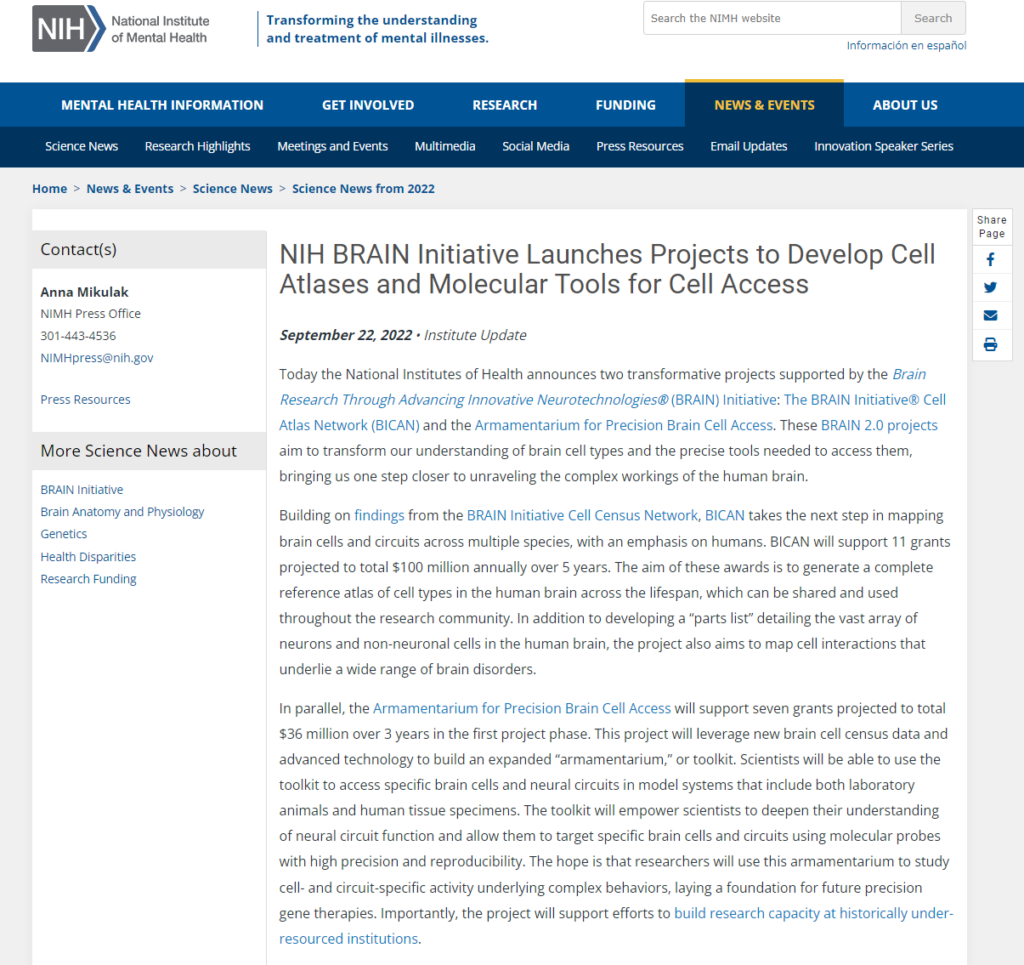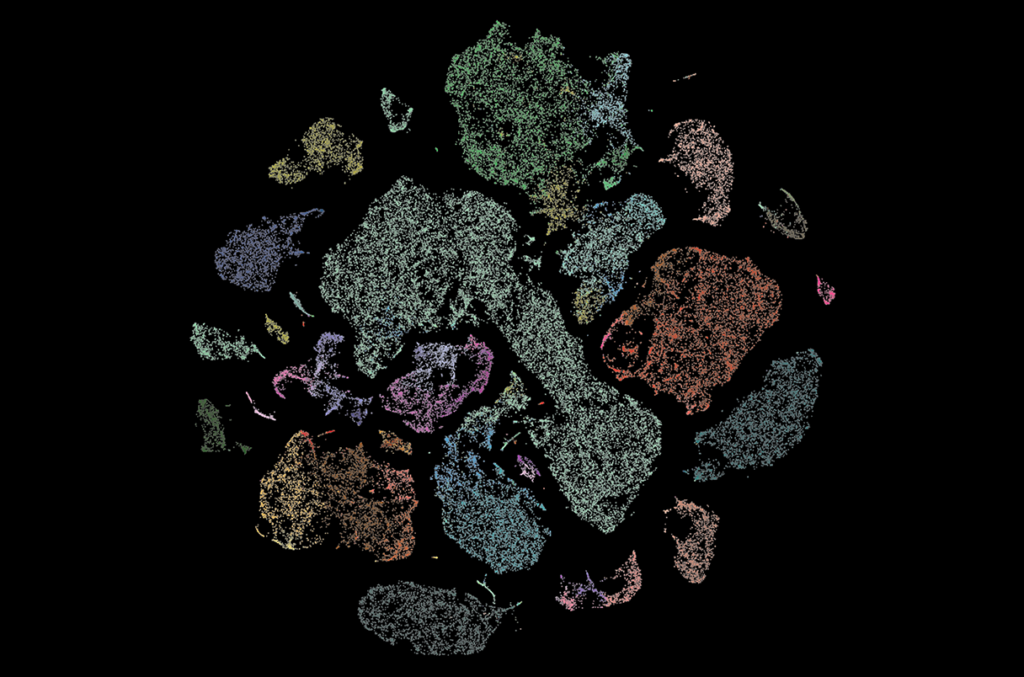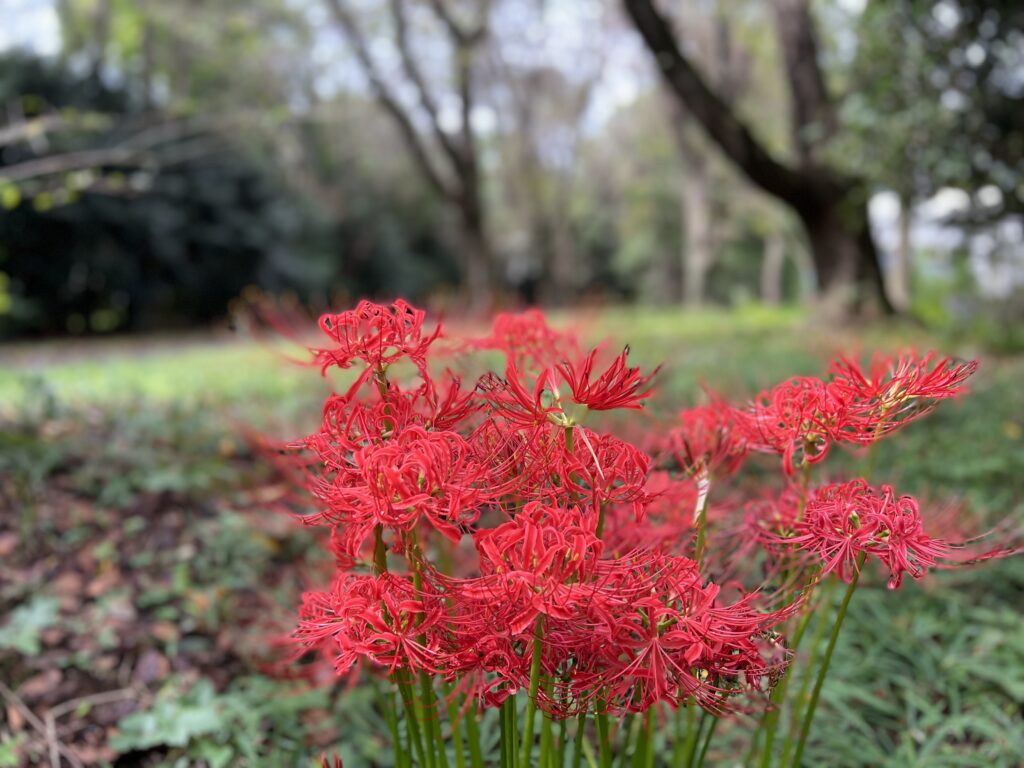史上最も詳細なヒトの脳アトラス作成に5億ドルを投入
The BRAIN Initiative, the 9-year-old, multibillion-dollar U.S. neuroscience effort, today announced its most ambitious challenge yet: compiling the world’s most comprehensive map of cells in the human brain. Scientists say the BRAIN Initiative Cell Atlas Network (BICAN), funded with $500 million over 5 years, will help them understand how the human brain works and how diseases affect it. BICAN “will transform the way we do neuroscience research for generations to come,” says BRAIN Initiative Director John Ngai of the National Institutes of Health (NIH).
BRAIN, or Brain Research Through Advancing Innovative Neurotechnologies, was launched by then-President Barack Obama in 2013. It began with a focus on tools, then developed a program called the BRAIN Initiative Cell Census Network, resulting in a raft of papers in 2021. The studies combined data on the genetic features, shapes, locations, and electrical activity of millions of cells to identify more than 100 cell types across the primary motor cortex—which coordinates movement—in mice, marmosets, and humans. Hundreds of researchers involved in the network are now completing a cell census for the rest of the mouse brain. It is expected to become a widely used, free resource for the neuroscience community.
Now, BICAN will characterize and map neural and nonneuronal cells across the entire human brain, which has 200 billion cells and is 1000 times larger than a mouse brain. “It’s using similar approaches but scaling up,” says Hongkui Zeng, director of the Allen Institute for Brain Science, which won one-third of the BICAN funding. Zeng says the results of the effort will serve as a reference—a kind of Human Genome Project for neuroscience.
Other groups will add data from human brains across a range of ancestries and ages, including fetal development. “We will try to cover the breadth of human development and aging,” says Joseph Ecker of the Salk Institute for Biological Studies, which leads BICAN studies of epigenetics, the study of heritable changes that are passed on without changes to the DNA. Ngai expects BICAN to study several hundred human brains overall, although investigators are just starting to work out details. “The sampling and coverage is going to be a big, big topic of discussion,” Ngai says.
Another $36 million over 3 years announced today will fund the BRAIN Armamentarium, which will develop viral vectors and lipid nanoparticles that home in on and genetically tweak specific types of brain cells. These tools will help scientists study cell function and develop disease treatments.
A third project called BRAIN CONNECTS focuses on tracing wiring diagrams in mammalian brains; early next year it will make $30 million in grants running up to 5 years. Altogether, NIH has spent $2.5 billion so far on BRAIN, a figure it expects to reach $5.2 billion by the end of 2026.
9年の歳月と数十億ドルの資金を費やして行われている米国の神経科学プロジェクト「BRAIN Initiative」は、本日、これまでで最も野心的な挑戦として、人間の脳の細胞に関する世界で最も包括的なマップを作成することを発表した。科学者たちは、5年間で5億ドルの資金を提供するBRAIN Initiative Cell Atlas Network(BICAN)が、人間の脳の働きや病気が脳に与える影響を理解するのに役立つと述べている。BICANは、「今後何世代にもわたって神経科学研究のやり方を変えていくでしょう」と、米国国立衛生研究所(NIH)のBRAIN InitiativeディレクターJohn Ngai氏は述べる。
BRAIN(Brain Research Through Advancing Innovative Neurotechnologies)は、2013年に当時のバラク・オバマ大統領によって立ち上げられた。ツールに焦点を当てることから始まり、BRAIN Initiative Cell Census Networkというプログラムを開発し、2021年に多数の論文を発表した。この研究では、数百万個の細胞の遺伝的特徴、形状、位置、電気的活動に関するデータを組み合わせ、マウス、マーモセット、ヒトの一次運動野全体で、運動を制御する100以上の細胞タイプを特定した。現在、このネットワークに関わる数百人の研究者が、マウスの脳の残りの部分の細胞センサスを完成させている。これは、神経科学の分野で広く利用される無料のリソースとなることが期待されている。
BICANは、2000億個の細胞を持ち、マウスの1000倍の大きさを持つヒトの脳全体の神経細胞および非神経細胞の特性評価とマッピングを行う予定である。BICANの助成金の3分の1を獲得したアレン脳科学研究所のHongkui Zeng所長は、「同様のアプローチを用いながら、規模を拡大している」と語る。Zeng博士によれば、この研究の成果は、「神経科学におけるヒトゲノム・プロジェクト」のようなリソースになるという。
他の研究グループも、様々な家系や年齢のヒトの脳から得たデータを追加する予定です。「ソーク生物学研究所のJoseph Eckerジョセフ・エッカー博士は、エピジェネティクス(DNAに変化を与えずに受け継がれる遺伝的変化)に関するBICANの研究をリードしている。Ngai博士は、BICANが全体で数百の人ヒト脳を研究することを期待しているが、研究者たちは詳細を検討し始めたばかりである。「サンプリングとその範囲については、大きな大きな議論になるでしょう」とNgaiは言う。
今日発表された3年間で3600万ドルの資金は、BRAIN Armamentariumに充てられる。この施設では、特定のタイプの脳細胞を見つけ出し、遺伝的にmanipulateするウイルスベクターと脂質ナノ粒子を開発する予定である。これらのツールは、科学者が細胞の機能を研究し、病気の治療法を開発するのに役立ちつ。
BRAIN CONNECTSと呼ばれる3番目のプロジェクトは、哺乳類の脳の配線図を追跡することに焦点を当てており、来年初めには最長5年間で3000万ドルの助成金が支払われる予定です。NIHはこれまでにBRAINに25億ドルを投じており、2026年末には52億ドルに達すると予想している。


